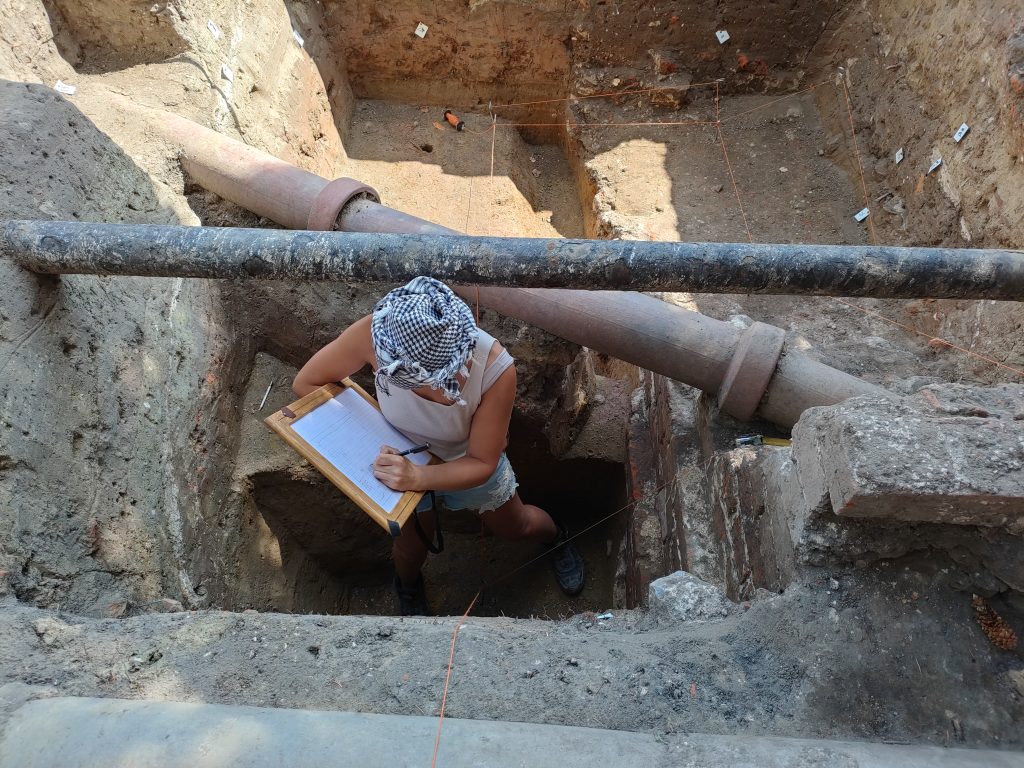News
Archaeological Research in the Outer Ward

Malbork Castle has been of interest to researchers since the late 18th century. The decades of restoration efforts that began around that time have been accompanied by research spanning various fields (art history, architecture, conservation and history). These efforts have been innovative and set new standards of scholarship. Considering the time spent researching it, you would be forgiven for thinking that we know nearly everything there is to know about the castle. However, continued research by historians and art historians has shown that many issues remain unclear and a subject of debate. In addition, archaeology has so far played only a minor role in the efforts to study Malbork Castle. In the past, excavation work was primarily conducted as part of development projects, and no large-scale research has so far been conducted based on a consistent and coherent programme for the purpose of analysing the castle complex. However, archaeology remains a tremendous source of new knowledge about the appearance and layout of the castle, how it transformed over time, and what life and work was like for its inhabitants. From late July to early September, archaeological research was conducted under the supervision of Dr Bogusz Wasik from the Department of Archaeology of the Malbork Castle Museum – the first stage of a research project aimed at expanding our knowledge of the castle.
The research primarily focused on the Outer Ward area – a section of the castle complex that had previously attracted little interest. Near the church of St Lawrence and the adjacent northern building, which served as an infirmary for soldiers in the Middle Ages and as a brewery in the Early Modern Period (and later as a hotel), three larger areas were excavated in addition to three smaller probing digs. The research contributed new insights into this part of the castle. In the western section, in front of the castle wall, remnants were found of a structure predating the brick Outer Ward. An area covered with half-round wooden logs was found, which can be assumed to have formed a section of a wharf on the River Nogat and its distributaries. The structure was built in the Teutonic period, as evidenced by the associated finds (potsherds), and was in use for a relatively long time, judging by it being reinforced several times by raising the ground level. However, this was before the Outer Ward wall was erected in the second quarter of the 14th century. Its construction technique was also analysed during the excavation efforts.
With the help of mid-18th century maps, remnants of a rectangular cuboid building were discovered to the east of the mediaeval infirmary (late modern brewery), which, among other functions, served as a tavern between the 16th and 18th centuries. However, contrary to what had been believed, the building proved older, part of the entire 16th-century building complex, and was connected to the Teutonic infirmary. As a result of the research, in addition to the chronology, we now know its exact location and construction techniques used. The building was demolished when Malbork was captured by Prussia (after 1772). Various minor finds originating from this period were identified, including Prussian coins, thimble elements, pendants, metal fittings, etc.
The purpose of the excavation site located in the central section of the courtyard was to verify the accuracy of a 1629 plan, which indicated the existence of a pond stretching along the facades of the Outer Ward buildings. The plan proved accurate, and it was also determined that the pond had existed here from the very beginning, and that its bottom was nearly 4 metres below the current ground level during the Teutonic period. In the Middle Ages and the Early Modern Period, the pond was used for waste disposal, which means that its layers contained a great many artefacts, such as potsherds, masonry stove tiles, animal bones and metal items, including horseshoes and heel protectors. Interestingly enough, the pond had originally been a natural body of water, and had not been dug by the Teutons. After excavating deeper, a small prehistoric potsherd was found in a natural layer.
The research team consisted of nine archaeologists, including students from the University of Gdańsk and doctoral students from the University of Wrocław and the Nicolaus Copernicus University in Toruń.

Tickets
Buy tickets online
Opening Hours
- Mon:9:00 - 15:00
Exhibitions
- Tue - Sun:9:00 - 15:00
Contact
Tourist Information
- +48 55 647 08 00
- +48 55 647 09 02
- +48 55 647 09 78
